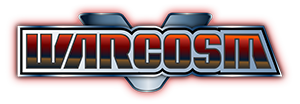
This option changes the way that movement is handled by focusing on a ship’s inertia as its main source of velocity. Ships maintain their current speeds from one turn to the next. In other words, ships always travel the same number of spaces unless they accelerate or decelerate. Each turn retains one Reaction Phase and one Damage Control Phase, but uses Three sets of Movement and Attack Phases, each focusing on one-third of a ship’s movement and actions.


Note that because these speeds are not limited, a ship can traverse a huge number of spaces each turn when constantly accelerating. This can prevent opposing ships from even getting close enough to perform attacks. While this very factor is what should limit speeds, a specified limit can also be used. One suggestion for such a limit is five times a ship’s current tactical drives rating (for example, a ship with 4 tactical drives checkboxes would be limited to a maximum velocity of 20 spaces per turn).


 Reaction Phase
Reaction Phase

During the Reaction Phase, each ship must be issued movement orders, comprising two elements—acceleration and course change. Acceleration defines how the craft’s velocity is changed from one turn to the next. When a ship first exits hyperspace, its velocity is equal to its tactical drives rating. It can then increase or decrease this velocity each turn by a number of spaces equal to its current number of tactical drive checkboxes. This change in velocity must be stated during the Reaction Phase.


A ship always travels in a straight line at its current velocity unless it orders a course change during the Reaction Phase. A ship’s maximum permitted course change (facing changes) is equal to its current number of maneuvering thrusters checkboxes. For example, a ship with three maneuvering thrusters checkboxes can make a course change of three facings (three hex-sides or 135°, depending on the playing surface). The final intended course change for the turn is declared during the Reaction Phase.


 Combat Rounds
Combat Rounds

Each set of Movement and Attack Phases constitute a combat round. Hence, there are three combat rounds per turn. The normal order determined by the Reaction Phase is maintained for all combat rounds during the same turn.


 Movement Phases
Movement Phases

Each player moves one of his ships a number of spaces equal to one-third its current velocity (the velocity after being adjusted for acceleration declared during the Reaction Phase) during each Movement Phase. If a velocity cannot be evenly divided into thirds, the remainder is added to the last Movement Phase. For example, a ship with a velocity of ten moves three spaces during Movement Phase 1, another three during Movement Phase 2, and four during Movement Phase 4 (3 + 3 + 4 = 10). The ship
must use its remaining velocity on the last Movement Phase.


Any of the declared number of facing changes can be made during each of the Movement Phases, but only one can be made per space. In other words, if three facing changes were declared for a ship in a given turn, it can make one change per Movement Phase or even all during the same Movement Phase, as long as each change is accompanied by the movement of at least one space.


 Attack Phases
Attack Phases

Each Movement Phase is followed by an Attack Phase. This is handled normally, except that any weapons fired during an Attack Phaser cannot be fired again until the next turn. For example, if a ship with four laser batteries fires three during the first Attack Phase, it only has one remaining to fire during either the second or third Attack Phases. The effects of successful attacks are determined and applied immediately.


 Damage Control Phase
Damage Control Phase

The Damage Control Phase remains unchanged, except that if a ship does not complete its intended course change (not making the declared number of facing changes), it suffers from a temporary loss of control and all its attacks on the following turn receive a modifier of -2.


 Turn Structure
Turn Structure

| 2. | Combat Round 1 (Movement and Attack Phase 1) |

| 3. | Combat Round 2 (Movement and Attack Phase 2) |

| 4. | Combat Round 3 (Movement and Attack Phase 3) |


